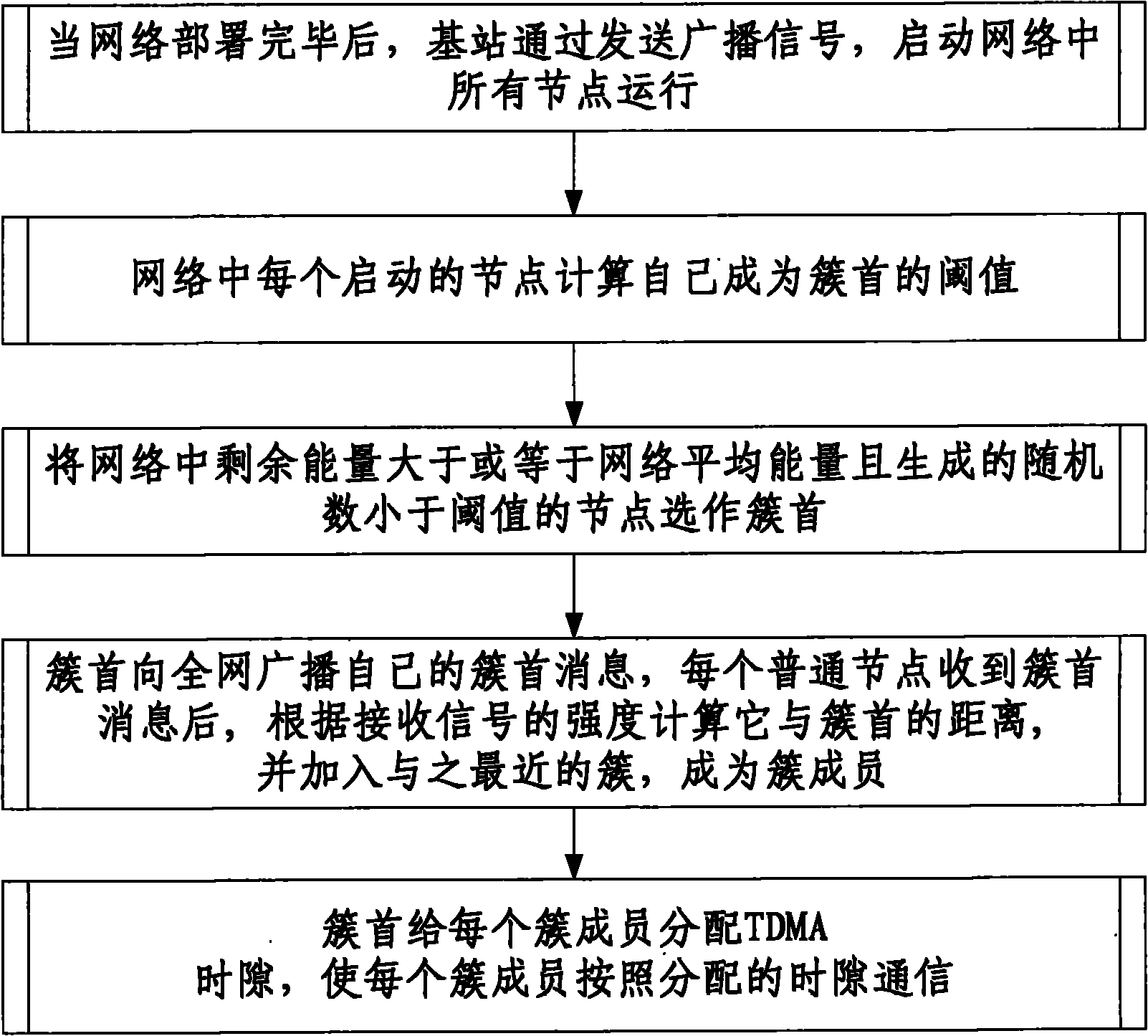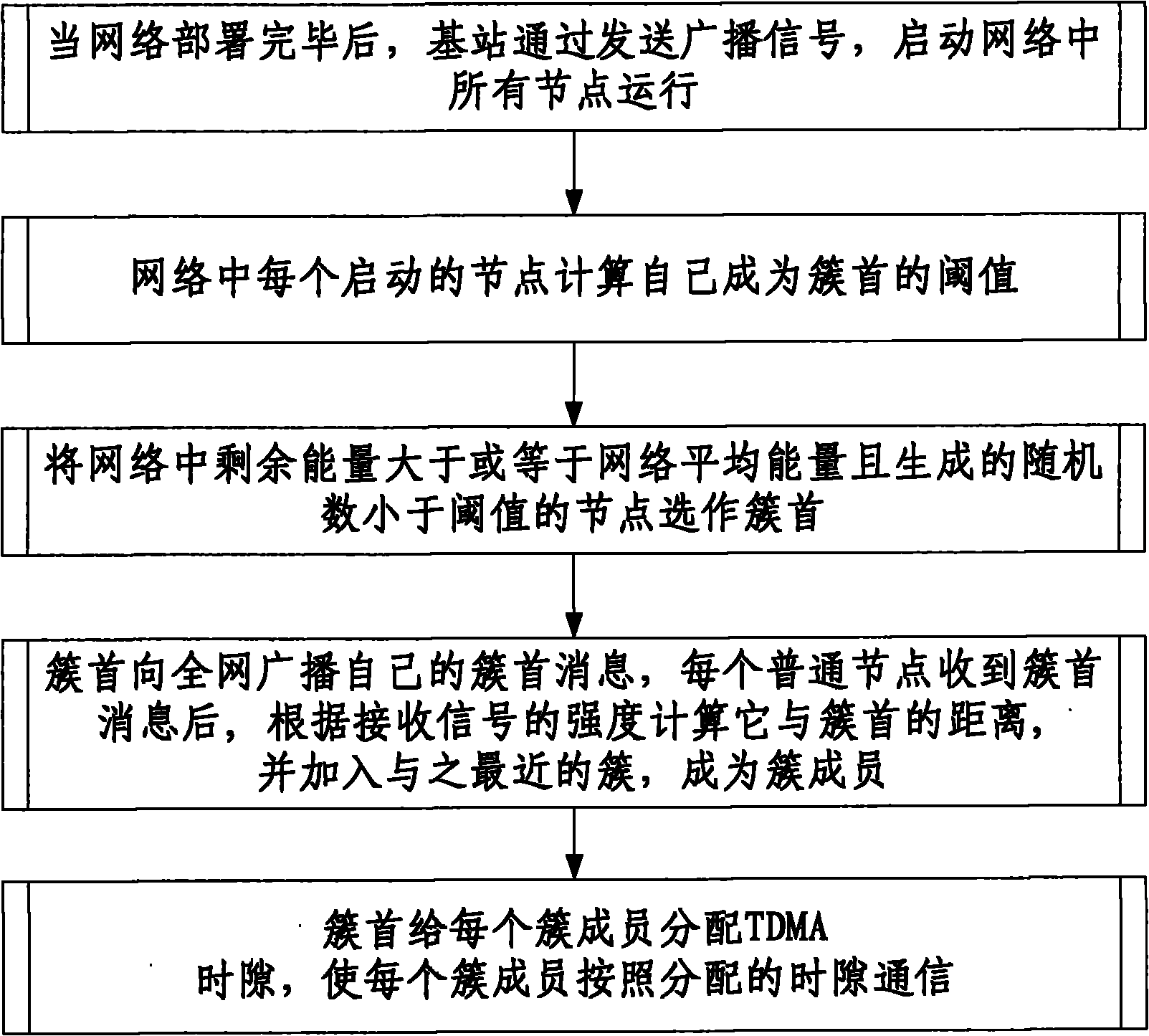Energy priority node clustering method for wireless sensor network
A wireless sensor network and node technology, applied in network planning, network topology, wireless communication, etc., can solve the problems of complex control and unbalanced energy consumption of cluster heads, and achieve the effect of prolonging survival time and excellent performance.
- Summary
- Abstract
- Description
- Claims
- Application Information
AI Technical Summary
Problems solved by technology
Method used
Image
Examples
Embodiment Construction
[0023] The preferred embodiments of the present invention will be described in detail below in conjunction with the accompanying drawings. It should be understood that the preferred embodiments described below are only used to illustrate and explain the present invention, and are not intended to limit the present invention.
[0024] figure 1 The energy-priority node clustering method in the wireless sensor network of the present invention is shown, including the following steps:
[0025] When the network is deployed, the base station starts all nodes in the network by sending broadcast signals;
[0026] Each activated node in the network calculates the threshold for becoming a cluster head;
[0027] The nodes whose remaining energy in the network is greater than or equal to the average energy of the network and whose generated random number is less than the threshold are selected as cluster heads;
[0028] The cluster head broadcasts its own cluster head message to the whole...
PUM
 Login to View More
Login to View More Abstract
Description
Claims
Application Information
 Login to View More
Login to View More - R&D
- Intellectual Property
- Life Sciences
- Materials
- Tech Scout
- Unparalleled Data Quality
- Higher Quality Content
- 60% Fewer Hallucinations
Browse by: Latest US Patents, China's latest patents, Technical Efficacy Thesaurus, Application Domain, Technology Topic, Popular Technical Reports.
© 2025 PatSnap. All rights reserved.Legal|Privacy policy|Modern Slavery Act Transparency Statement|Sitemap|About US| Contact US: help@patsnap.com



